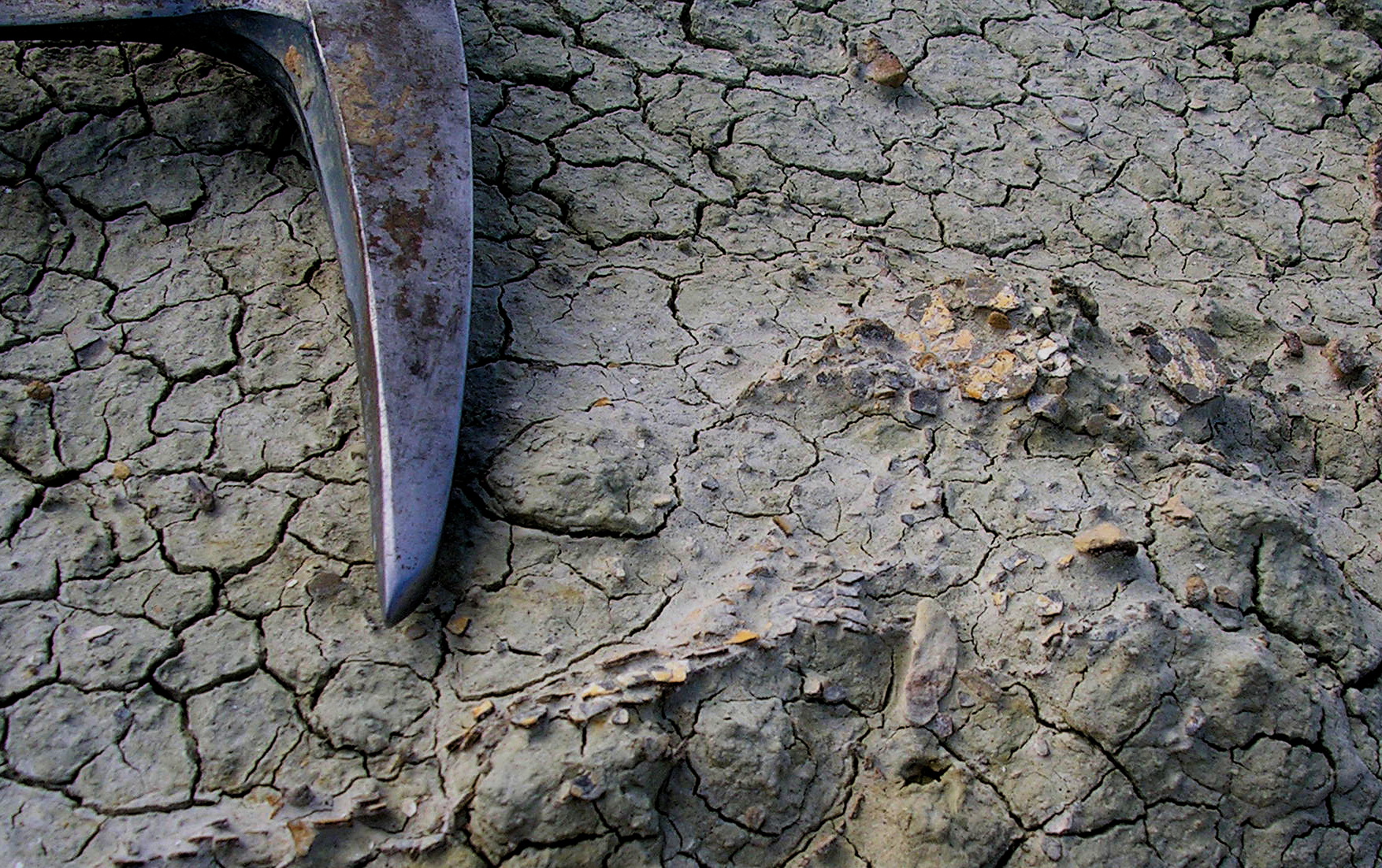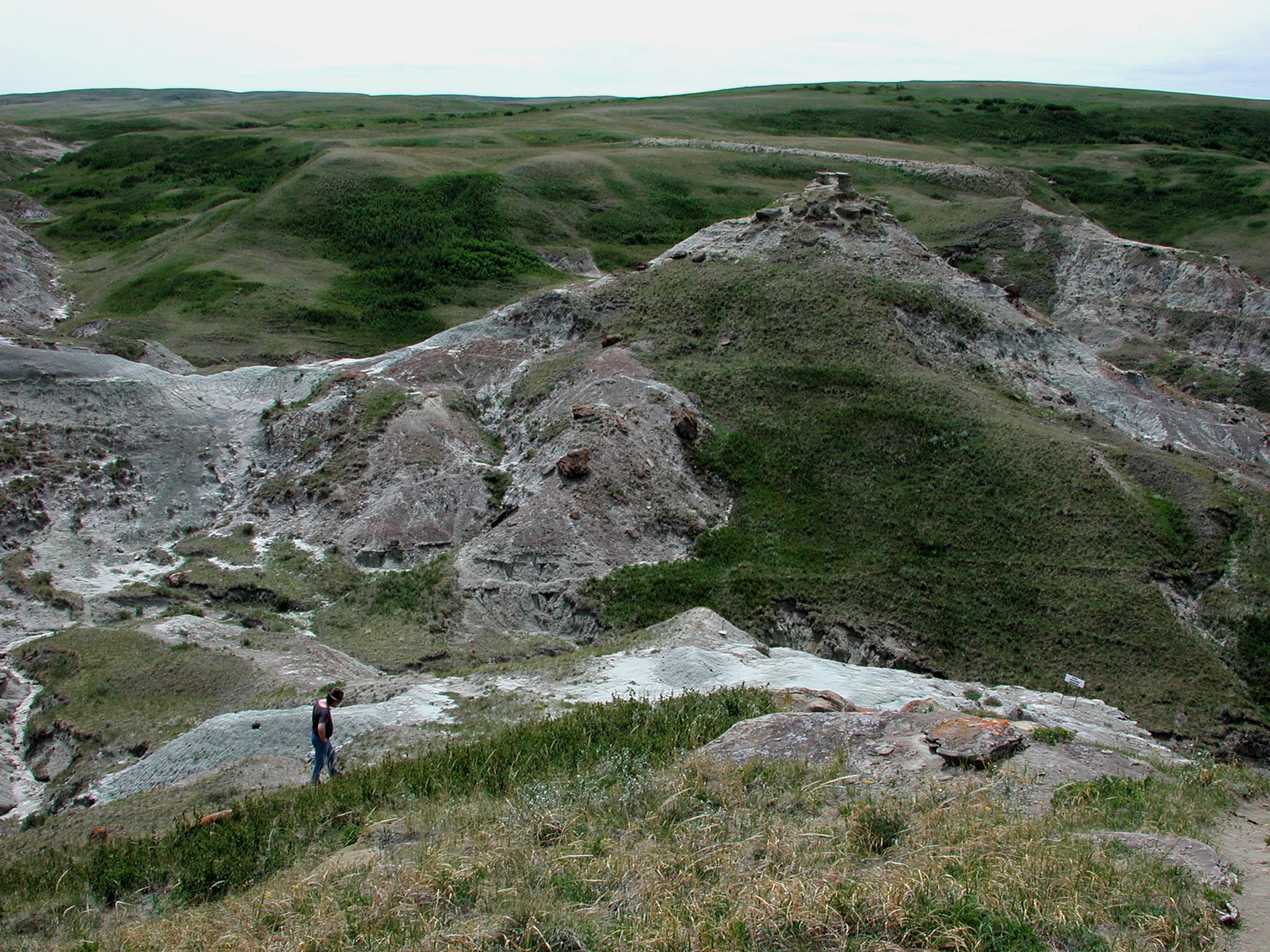Submitted by Administrator on Thu, 13/02/2020 - 17:54
New chemical analyses of dinosaur eggshell by Dr Robin Dawson (Yale University), Dr Daniel Field (University of Cambridge), and colleagues from the US, Canada and Israel, show that representatives of all three major dinosaur groups were endothermic (i.e., warm-blooded). As such, thermal-regulation is likely to have been the ancestral condition for dinosaurs, and helps explain their remarkably successful occupation of Earth’s Mesozoic landscapes from pole to pole.
For decades, scientists have debated whether dinosaurs were warm-blooded, like mammals and birds, or cold-blooded, like most reptiles. Directly estimating internal body temperatures for extinct dinosaurs has been challenging—especially without a time machine and an extra-large thermometer—so conclusively determining the body temperature of T. rex and its extinct cousins requires a more cutting-edge approach.
Thanks to some innovative analyses of dinosaur egg-shell, researchers believe that they have identified a new approach to addressing the question of dinosaur warm-bloodedness. The development of isotope palaeothermometry has shown that the ordering of 13C and 18O atoms within the structure of carbonate, which forms dinosaur eggshell, is controlled by its formation temperature. This ordering is independent of the isotopic composition of the water from which the mineral formed, making it a good temperature proxy. Isotope palaeothermometry is a tried and tested method; successfully identifying the mineral formation temperatures of biogenic carbonates found in the teeth of reptiles, sharks, and mammals; as well as eggshell carbonate from reptiles and birds.
A protective carbonate eggshell is shared by extinct dinosaurs and their living descendants, birds. At an early stage in the development of an embryo inside its mother’s reproductive tract, the egg is surrounded and protected by the deposition of calcareous eggshell. The ordering of 13C and 18O atoms in the calcium carbonate mineral used to build the eggshell reflects that of the surrounding maternal body cavity.

A geological hammer next to fragments of dinosaur eggshells found in the field in southern Alberta, Canada. New isotopic techniques allow dinosaur body temperatures to be measured from dinosaur eggshells.
Since the method of palaeothermometry is known to work on living egg-laying animals, Dawson et al. decided to see what this approach can tell us about the body temperatures of extinct non-avian dinosaurs. However, they needed to find eggshells from dinosaurs that lived at high latitudes where environmental temperatures would have been below the internal body temperature of warm-blooded animals.
Fortunately, some of the world’s richest regions for dinosaur fossils and their eggshells are from high palaeolatitudes, e.g., western Canada, so the team collected well-preserved eggshells from all three major lineages of Mesozoic dinosaurs: (i) the long-necked sauropods, (ii) the duck-bills (representing the ‘bird-hipped’ ornithischian dinosaurs), and (iii) the theropods (the three-toed carnivores, which are most-closely related to living birds). As a check on ambient environmental temperature of each sample site, the team also analysed carbonate minerals from the shells of ectothermic molluscs, which were found near the dinosaur eggshells.

The ‘Devil’s Coulee’ locality in southern Alberta, Canada. These rocks, of Late Cretaceous age, have produced an abundance of fossilised dinosaur eggshells that enable the determination of internal body temperatures of long-extinct dinosaurs.
The analysis shows a remarkably clear separation between the ‘warm’ body temperatures of 30–40 °C in sauropod, ornithischian and theropod dinosaurs; and temperatures of 24–28 °C derived from contemporary molluscs. This disparity is explained by the ability of dinosaurs to regulate their body temperatures; keeping it above that of the surrounding environment.
Because representatives of all three Mesozoic dinosaur lineages seem to have exhibited body temperatures similar to those of living birds, it is logical to conclude that the last common ancestor of all dinosaurs would have been warm-blooded. Therefore, the warm-bloodedness shared by all living birds seems to have had a truly ancient origin.
Douglas Palmer
Sedgwick Museum
Additional links:
Dawson, R. R., Field, D. J., Hull, P. M., Zelenitsky, D. K., Therrien, F., Affek, H. P., 2020. Eggshell geochemistry reveals ancestral metabolic thermoregulation in Dinosauria. Science Advances, 6(7), eaax9361. DOI:10.1126/sciadv.aax9361
